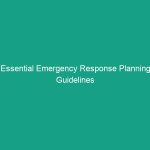Good Morning Team!
Today, we’re going to talk about something very important as we head into the colder months—how to select essential cold weather clothing. This isn’t just about staying warm; it’s about ensuring your Safety and comfort while working in potentially hazardous conditions. By mastering layering and understanding materials, you can significantly improve your performance and health on the job.
Understanding Essential Cold Weather Clothing Selection
The term essential cold weather clothing selection refers to the process of choosing the right apparel to protect yourself from cold temperatures. This is crucial in various work environments, especially for those who spend extended periods outdoors or in unheated areas. Proper clothing helps maintain body heat and prevents cold-related illnesses such as hypothermia and frostbite.
Many people mistakenly believe that simply wearing heavy clothing is enough. However, it’s not just about warmth; it’s also about breathability and moisture management. Wearing the right layers can make a significant difference in your comfort and Safety.
Key Hazards, Risks, and Safety Considerations
Working in cold environments poses several risks:
- Hypothermia: A dangerous drop in body temperature that can occur when you’re exposed to cold for too long.
- Frostbite: Damage to skin and underlying tissues caused by extreme cold, typically affecting fingers, toes, and ears.
- Reduced Dexterity: Cold can constrict blood flow, making it difficult to perform tasks that require fine motor skills.
Ignoring the importance of proper cold weather clothing can lead to serious health consequences, impacting not only your well-being but also your work effectiveness. Always prioritize safety to avoid these Hazards.
Best Practices, Procedures, & Actionable Advice
Now, let’s discuss how to effectively select and wear cold weather clothing:
Mastering the Art of Layering
Layering is the key to staying warm and dry. Here’s how to do it effectively:
- Base Layer: This layer sits closest to your skin and should wick moisture away. Look for materials like polyester or merino wool.
- Mid Layer: This layer provides insulation. Fleece or down materials are excellent choices as they trap body heat without adding bulk.
- Outer Layer: The outer layer protects against wind, rain, and snow. Choose waterproof and windproof jackets to keep you dry and shielded from the elements.
Each layer serves a purpose, and together they create a barrier against the cold. Remember to avoid cotton as it retains moisture, which can lead to chilling.
Choosing the Right Materials
Different materials have unique properties, and understanding these can help you make better choices:
- Wool: Naturally insulating and moisture-wicking, wool keeps you warm even when wet.
- Fleece: Lightweight and breathable, fleece is an excellent insulator that’s also easy to layer.
- Polyester: Quick-drying and durable, polyester is often used in base layers and outerwear for good reason.
When selecting your clothing, consider the weather conditions and your specific job requirements. For example, if you’re working in wet conditions, prioritize waterproof materials.
Practical Tips for Cold Weather Clothing
Here are some tips to help you stay safe and comfortable:
- Always check the weather forecast before heading to work and dress accordingly.
- Keep an extra set of gloves and a warm hat in your gear bag, as losing body heat from your extremities can be dangerous.
- Take regular breaks to warm up in a heated area if you’re working outdoors.
- Stay hydrated and well-nourished; your body needs energy to generate heat.
By implementing these tips, you can minimize the risks associated with cold weather work.
Regulations, Standards, and Compliance
It’s crucial to adhere to relevant safety Standards, such as those set by OSHA. Keeping warm and safe is not only a personal responsibility but also a legal requirement in many workplaces. Compliance with these Regulations protects you and your coworkers, ensuring a safer working Environment. Always familiarize yourself with your company’s specific safety policies regarding cold weather gear.
Employee Engagement & Discussion
Now, I’d like to hear from you. What safety challenges have you encountered related to cold weather clothing? Have you ever experienced discomfort or health issues due to improper gear? Let’s discuss how we can collectively improve our cold weather safety practices.
Conclusion & Key Takeaways
To summarize, selecting essential cold weather clothing is vital for your safety and well-being. By mastering the art of layering and understanding materials, you can effectively combat the cold and reduce risks associated with working in low temperatures. Remember, your safety is paramount, and the right clothing can make all the difference.
Thank you for your attention today. Let’s make a commitment to prioritize our safety and the safety of our teammates as we navigate the colder months ahead!


